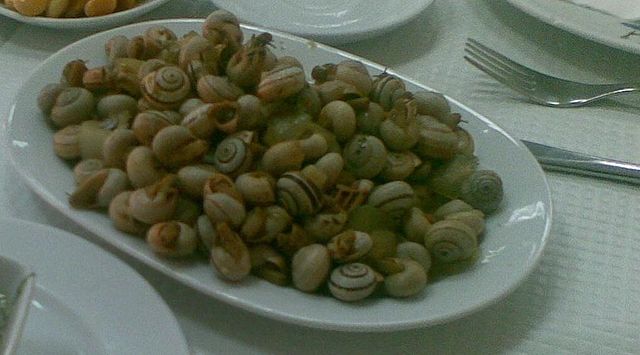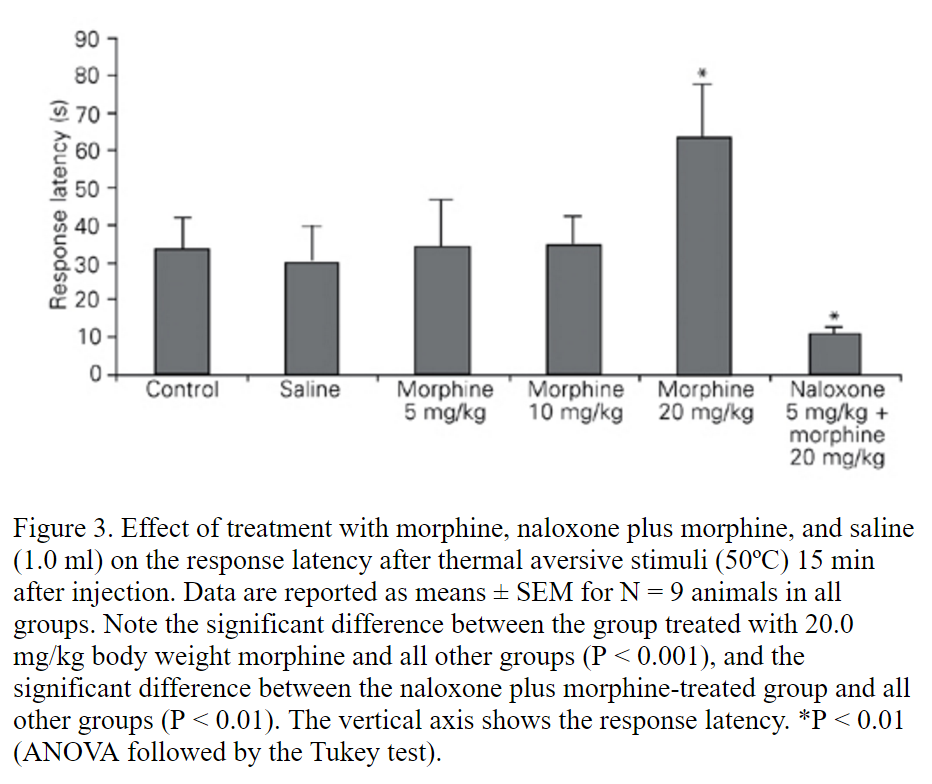Summary
Killing snails for food typically causes the snails intense suffering. In particular, boiling or frying them is probably extremely painful, given that snails display avoidance behavior in response to heat.
Contents
Introduction
 Humans have eaten snails since at least the Pleistocene. Unfortunately, the practice sometimes continues today, even for people who don't need to eat snails.
Humans have eaten snails since at least the Pleistocene. Unfortunately, the practice sometimes continues today, even for people who don't need to eat snails.
How snails are killed
Many snails for human consumption are cooked alive. In fact, this source says "DO NOT cook a dead snail. And never give a snail the benefit of the doubt. If you think a snail might be dead, poke it with a sharp object and if it does not react, do not cook it." That same source suggests boiling snails alive:
Boil the water. When it maintains a rolling boil, add the snails. They will be very uncooperative unless they have withdrawn. A shake of the container in which they await cooking should force them back into their shells.
Boil for three minutes, then drain and rinse the snails in cold water for several minutes more.
This video depicts DIY snail harvesting. The narrator explains regarding the process of boiling the snails:
So what I'm doing right now is I'm killing the snails. They were alive up to this point, and this will kill them. And that's one of the reasons I like to make sure the stock pot is at a rolling boil before I throw 'em in there. I figure that way they go faster. I don't wanna torture the poor little guys. So there they are boiling away, and we'll give 'em five minutes in the stock pot.
This page explains:
In Greece, snails are especially popular in the island of Crete, but are also eaten in many parts of the country and can even be found in supermarkets, sometimes placed alive near partly refrigerated vegetables. In this regard, snails are one of the few live organisms sold at supermarkets as food. They are eaten either boiled with vinegar added, or sometimes cooked alive in a casserole with tomato, potatoes and squashes.
Apparently not all snails are killed by heating. This page says: "In French culture, the snails are typically purged, killed, removed from their shells, and cooked". This article reports that most snails eaten in France "are in fact mainly reared or picked in Poland or Romania, where they are killed and boiled before being [sent] to France to be packaged for sale." Presumably killing by means other than heating is also painful, but I won't explore that topic in this piece.
How painful is heating?
For a mammal, I would guess that boiling or frying alive would be one of the most painful deaths possible, based on my experiences with extreme heat and the opinions of others. But maybe snails don't find heat painful?
Unfortunately, snails do find heat extremely aversive. This paper explains regarding two types of land snails:
In response to thermal stimuli, within a few seconds C. nemoralis (40ºC) and M. sanctipauli (52ºC) showed aversive behavior characterized by lifting the anterior regions of the head-foot (H-F) complex. This behavior is not detected in snails at room temperature or at lower temperatures such as 30-33ºC (4,6).
Interestingly, this aversion to heat was reduced by opioids, similar to what we might expect in mammals:
the administration of morphine sulfate, methionine-enkephalin or ß-endorphin resulted in a significant increase in the latency of thermal avoidance behavior (4,6).
And heat avoidance was increased once more in the presence of opioid antagonists:
the increased latency resulting from morphine administration to C. nemoralis, Limax maximus and M. sanctipauli after a thermal stimulus can be suppressed by the opiate antagonist, naloxone (3,4,7). Thus, in these gastropods the ability of the nonselective opiate antagonist naloxone to produce a complete blockade of morphine analgesia indicates that a µ receptor is related to this behavior (4,8). Naloxone alone decreases the latency of the thermal stress (2).
This study reported similar results, shown here:

The authors concluded: "The fact that naloxone suppressed the analgesic response of morphine and reduced the nociceptive response of the endogenous peptides suggests the existence of an opiate mechanism in M. abbreviatus."
Snails put on hot plates display "biphasic passive/active avoidance behaviour" in which they first retract and, when the heat doesn't stop, they then try to move away from it. This study confirmed that finding and reported that it took on average 25 seconds for snails to switch from avoidance to escape behavior.
Numbers of snails eaten
According to one estimate, "Portugal consumes about 4,000 tonnes of snails each year." Assuming the snails weigh roughly ~20 g each, that's ~2 * 108 snails per year. Portugal's population is ~107 people, so that's ~20 snails per person per year.
This article quotes an estimate of "30,000 tonnes of snails consumed in [France] each year". Again assuming ~20 g per snail, that's ~1.5 * 109 snails per year. Given France's ~66 million people, that's again about 20 snails per person per year.
How about bivalves?
Snails are gastropods. Another group of edible mollusks is bivalves, such as oysters and mussels. The following piece discusses the question of bivalve sentience: "Can Bivalves Suffer?"